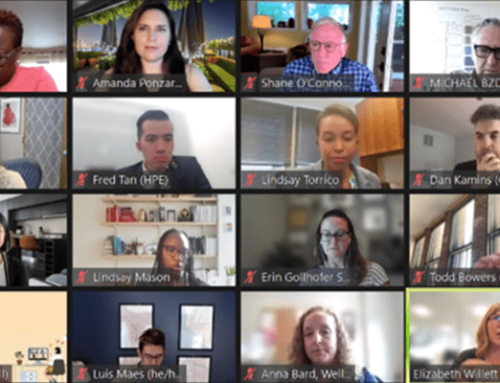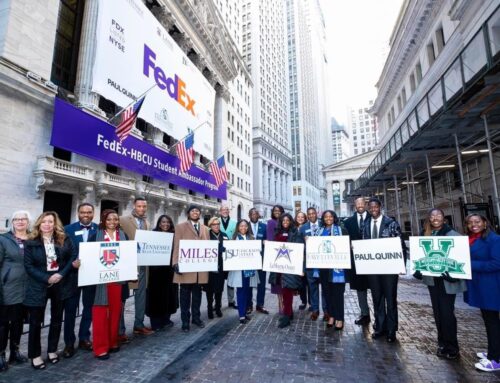How Purpose Transforms People and Communities
By: Akhtar Badshah, PhD. Chief Catalyst, Catalytic Innovations Group
Purpose Mindset: How Microsoft Inspires Employees and Alumni to Change the World
What motivates people to give? In his book The Purpose Economy, Alan Hurst discovered that in any company or group, you can generally place people into three categories: 1) those that are driven by status and influence, 2) those that are driven by wealth, and 3) those that are driven by purpose. Of course, those people may have secondary goals that align with another category but will largely view their work through the dominant lens. But how do you, in a company, think about activating purpose in all employees?
My new book, Purpose Mindset: How Microsoft Inspires its Employees and Alumni to Change the World, tells the inside story of how Microsoft’s culture of purpose transformed the company and started a movement in the global community. I profile 24 individuals and their journey – from childhood to Microsoft and beyond – to purpose, in hopes of inspiring other companies and individuals to create positive change through purpose.
In the early days, Microsoft was home to a group of hard work 20-somethings, with a vision to change the world through technology. Many of them had little connection to the Seattle community. Mary Gates, Bill Gates’ mother, encouraged Bill Gates to launch an employee payroll deduction program through United Way in 1983 (raising $17,000) planting the early seed of philanthropy at Microsoft. When Bill Neukom joined the team in 1985 as the Chief Legal Officer, he wanted to take that further. Neukom saw philanthropy as an opportunity for Microsoft employees to establish roots in the community and asked for Community Affairs to be included under his scope. He had worked with Bill Gates Sr. in his law firm and had observed the positive impact of investing in the community. When he came to Microsoft, he saw a company full of young people working long hours, wanting to change the world. Yet he knew these young, talented employees who came from all over the country would eventually build deep connections in the Seattle community, and felt it was important to have a program within the company to facilitate those connections. And so, the employee giving program was born.
That early decision – motivated by a desire to build real roots in the community – has since impacted the lives of millions across the globe. It was also the catalyst to a program that has inspired thousands of employees to become deeply engaged in their communities during and after their time at Microsoft. This is perhaps one of the lessons that inspires me most: that even young employees – or young companies – who may have a small impact at first can grow their philanthropic efforts over time to become deeply impactful to the global good.
But how does one keep the flame going over time? Without purpose, the light dims and the path darkens. As such, companies without purpose run the risk of burning out their employees. Purpose Mindset tells the story of how, even in a hypercompetitive environment largely focused on a growth mindset, a company can create avenues through which employees can cultivate purpose. In doing so, they are able to provide a renewable source of energy to its employees that will drive humanity forward. Companies like Microsoft who embrace purpose can help employees move from a growth mindset to a purpose mindset, igniting their own movements to create positive change. It is this purpose-fueled energy that will bend the arc of humanity and create a better world for all.
It is thus my view – from personal experience and extensive research – that if we strive to inculcate purpose, not success, in companies and individuals, the world will be a better place. My hope in writing Purpose Mindset is to explore why certain people are driven by purpose to move beyond personal growth to making an impact on society. I hope readers will see how they, too, can move from a growth mindset to a purpose mindset and ignite their own movements to create positive change. I also hope that other companies can glean lessons from Microsoft’s efforts and be inspired to create their own institutional structures that enable a culture of purpose and empathy.
Purpose Mindset is available for pre-order here and will be available where books are sold on November 10th. Purpose Mindset: How Microsoft Inspires Employees & Alumni to Change the World is published by HarperCollins Leadership and is the first in a series of Microsoft Alumni Network imprint.

Akhtar Badshah , Chief Catalyst at Catalytic Innovators Group
Akhtar Badshah is a seasoned executive with over 30 years of experience in international development, managing a corporate philanthropic program and co-founding a global nonprofit for social enterprise. Dr. Badshah is Chief Catalyst at Catalytic Innovators Group where they are advising individuals and organizations to catalyze their social and philanthropic investments. Dr. Badshah is the Distinguished Practitioner at University of Washington at the Evans School of Public Policy & Governance and at the Business School, Bothell campus. He is the founder and curator of Accelerating Social Transformation, a mid-career professional development certificate course on social impact. Dr. Badshah led Microsoft’s philanthropic efforts for ten years, where he administered the company’s community investment and employee contributions. He was instrumental in launching both Unlimited Potential and Youth Spark – the company’s focus to bring digital technology to the underserved communities and youth all over the world. Dr. Badshah serves on the boards of Microsoft Alumni Network, Global Washington (Chair) and The Indus Entrepreneurs, Seattle. He is an accomplished artist and a doctoral graduate of the Massachusetts Institute of Technology. Dr. Badshah and family are very active philanthropist in the Seattle area.







